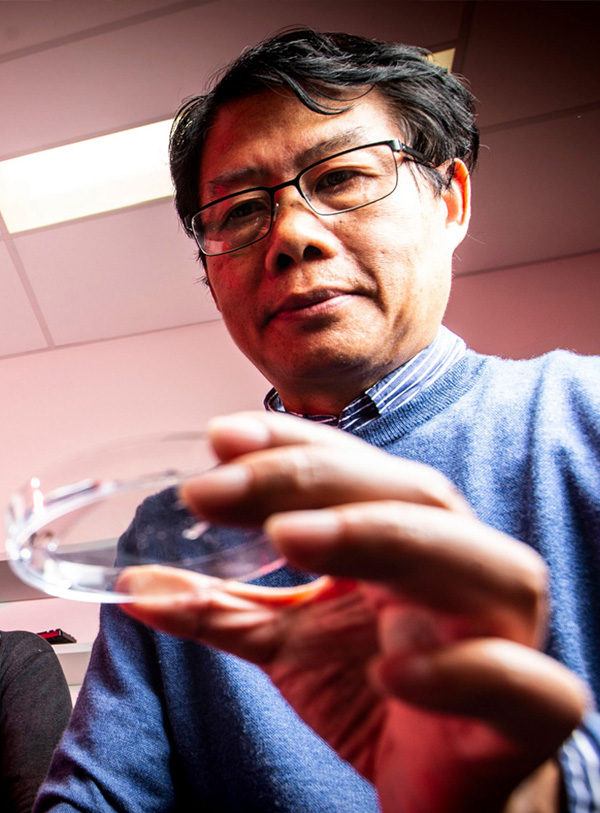It is estimated that there are still many thousands of atomically-thin and 2D materials still to be discovered, with applications in electronics, sensing, imagery, industrial catalysis and biomedicine.
Atomically-thin materials
Enabling technology A
Prof Xiaolin Wang
Leader, Enabling technology A,
UOW
Expertise: design/fabrication and electronic/spintronic/superconducting properties of novel electronic or spintronic systems such as topological insulators, high spin-polarised materials, superconductors, multiferroic materials, single crystals, thin films, nanosize particles/ribbons/rings/wires
Research outputs (Xiaolin Wang):
560+ papers
15,100+ citations
h-index 61 (Scopus)

Novel materials are fascinating for both fundamental physics and their great practical applications in electronics.

Double-dosing induces magnetism, strengthens electron quantum oscillations in topological insulator
Each of FLEET’s three research themes is significantly enabled by the science of novel, atomically-thin, two-dimensional (2D) materials.
These are materials that can be as thin as just one single layer of atoms, with resulting unusual and useful electronic properties.
To provide these materials, from bulk crystals to thin films to atomically-thin layers, FLEET draws on extensive expertise in materials synthesis in Australia and internationally.
The most well-known atomically-thin material is graphene, a 2D sheet of carbon atoms that is an extraordinarily-good electrical conductor.
FLEET scientists use other atomically-thin materials in their search for materials possessing the necessary properties for topological and exciton-superfluid states.
2021 highlights
- Implementing dual doping effect in 3D topological insulators single crystals – (see case study)
- Achieving quantum transport and giant magnetoresistance in a new half-metal Sr2CrMoO6
- Discovering a new ferromagnetic material CuCo2S4
- Achieving giant anomalous Hall effect in Weyl metals Mn3Sn
- Realising superior thermoelectric effect in nano-engineered topological insulators
- Fabricating persistent-spin candidate BiInO3 films and studied surface termination and electronic structure
- Creating new phase of multiferroic BiFeO3 with attractive electrochemical response
- Establishing effect of electric field on modulated phases
- Discovering intrinsic magnetic topological insulator with large band gap MnBi2Te4
- Reviewing proximity coupling of magnetism to topological insulators.
In 2022 FLEET will…
- Develop new 2D ferromagnetic systems for AHE or QAHE study of topological superconductors
- Achieve giant thermoelectric effect and its application in engineered topological insulators
- Establish and study magnetocapacitance in BiInO3/Ni structures
- Create ferroelectric superlattices with solitons
- Induce giant anisotropy in transport and magnetotransport in LSMO films
- Use ferroelectric/multiferroic skymrons and bimerons in BFO superlattices
- Understand electrical conductivity of ferroelectric bubble domains
- Investigate bandgap fluctuations.